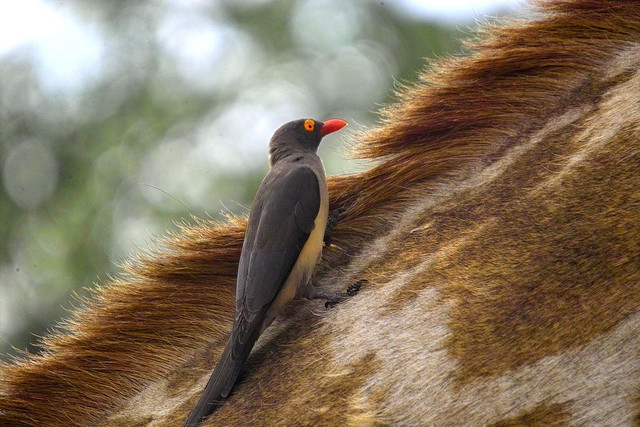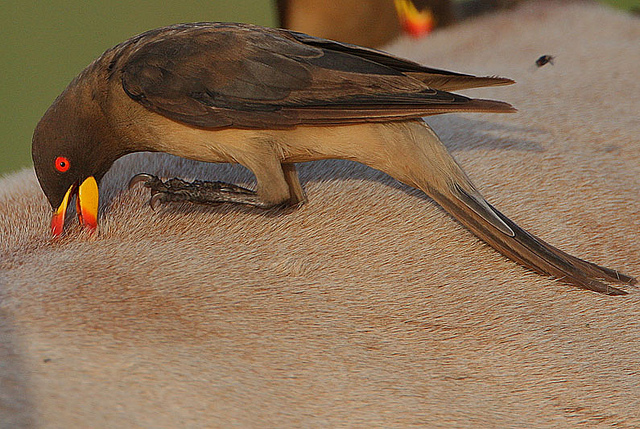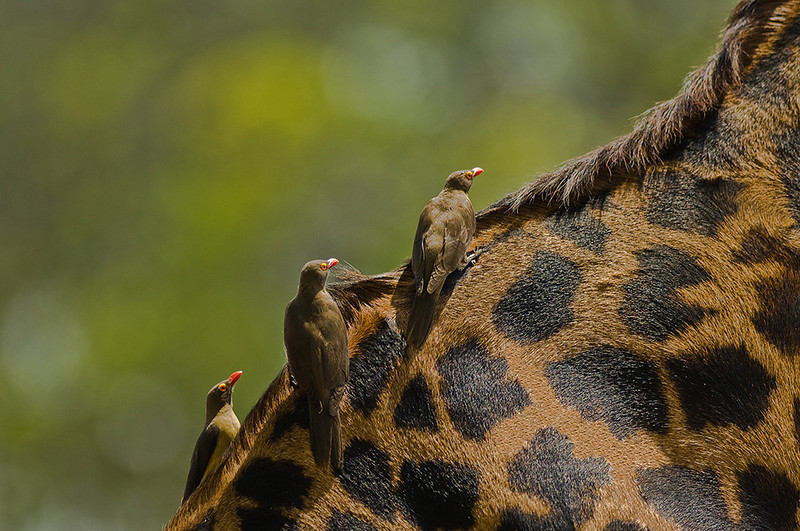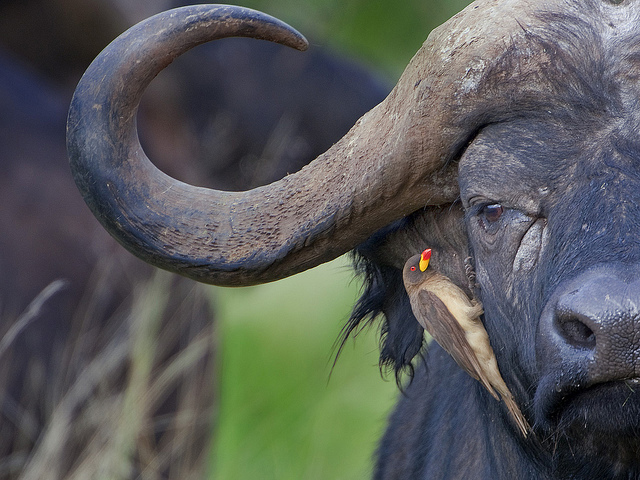 |
| Red-billed Oxpecker (Buphagus erythrorhynchus) on Giraffe©© |
The oxpeckers are two species of bird which make up the family Buphagidae. Some ornithologists regard them as a subfamily Buphaginae within the starling family Sturnidae but they appear to be quite distinct. Oxpeckers are endemic to the savanna of Sub-Saharan Africa. Both the English and scientific names arise from their habit of perching on large mammals (both wild and domesticated) such as cattle or rhinoceroses, and eating ticks, botfly larvae, lice and other parasites.
 |
| Red-billed Oxpecker by Africaddict checking an impala ear |
The Egyptians had their run-in with lice when the LORD told Moses to – “Stretch out thy rod, and smite the dust of the land, that it may become lice throughout all the land of Egypt. And they did so; for Aaron stretched out his hand with his rod, and smote the dust of the earth, and it became lice in man, and in beast; all the dust of the land became lice throughout all the land of Egypt.” (Exodus 8:16-17 KJV)
 |
| Yellow-billed Oxpecker (Buphagus africanus) ©© |
Many large animals today have lice, ticks, and such and the Lord has provided them a bird that gets its meals from the things crawling around on animals backs, legs, necks, ears, and even their nostrils. Most of the animals do not mind the help they receive from these oxpeckers. The elephants aren’t always happy, but the oxpeckers find plenty of other animals. Also known as tickbirds, oxpeckers have very short legs and sharp claws, which aid them in perching on the backs of large mammals, both wild and domesticated. Oxpeckers were designed with broad, thick, laterally flattened beaks to pick at and feed on skin parasites such as ticks and embedded larvae. They also pick at scabs, often opening and enlarging wounds, and probably obtain their main nourishment from the blood from these wounds rather than from the ticks. Although these birds are valuable from the standpoint of ridding domesticated animals of parasites, they also feed on tick-free game and become debilitating parasites themselves.
Researchers are not sure why they pick the scabs, but they do know that the birds aid the host animals by providing alarm sounds when danger is lurking.
Job was asked by the LORD,
“Is it by your understanding that the hawk soars and spreads his wings toward the south? Is it at your command that the eagle mounts up and makes his nest on high? (Job 39:26-27 ESV)
We don’t always understand why the birds and critters do what they do, but they have a Creator who does. The Lord encourages us to study and learn, but we do not always find the exact answer.
 |
| Red-billed Oxpecker (Buphagus erythrorhynchus) by Africaddict |
The Oxpeckers are about 9 inches long with a brownish color on the upper parts, with a lighter underside. The two Oxpeckers are the Red-billed and the Yellow-billed. The Red-billed has a red bill and yellow eyes where as the Yellow-billed has a yellow bill with a red tip and it has red eyes. The bird spends most of its time on the animals and even court and mate while riding on their back.
Some Breeding Facts from Biodiversity Explorer:
* Monogamous, cooperative breeder, as the breeding pair are usually assisted by up to 7 helpers who are usually unmated adults and juveniles from the previous breeding season.
* It usually nests in a natural tree cavity or a hole in rock or a stone wall, lining the interior with hair from its mammal hosts, dung, grass and rootlets.
* Egg-laying season is from October-March.
* It lays 2-5 eggs, which are incubated by both sexes for about for about 12-13 days.
* The chicks are fed by all members of the group, leaving the nest after about 30 days and becoming fully independent roughly two months later.
 |
| Yellow-billed Oxpecker with Water Buffalo ©© |
This behavior between the animals and the Oxpeckers is another example of cooperation (symbiosis) between species.
From Psalms we know that all creation is His,
For every beast of the forest is mine, the cattle on a thousand hills. I know all the birds of the hills, and all that moves in the field is mine. (Psalms 50:10-11 ESV)
Videos:
Red-billed Oxpecker by Joseph del Hoyo
Yellow-billed Oxpecker by Joseph del Hoyo
Other Posts in this Series:
No responses yet